Wellbeing Thought Starters: Application Concepts
Informed by insights from our research, we’ve developed some settings that can be a catalyst for intentionally designing work environments that support the physical, cognitive and emotional needs of people at work.
Informed by insights from our research, we’ve developed some settings that can be a catalyst for intentionally designing work environments that support the physical, cognitive and emotional needs of people at work.
Planning for the Dimensions of Wellbeing
Attaining wellbeing at work is about creating and sustaining a healthy physical and mental state over time in a supportive physical and social environment. No single space can do this alone.
Optimism
Provide spaces that can be easily modified by individuals and teams to encourage experimentation, spark imagination and creativity, and expand possibilities.
Mindfulness
Create environments that support focus and minimize distractions for all tasks by providing a diverse range of settings that facilitate individual concentration, 1:1 connections, collaboration and team focus.
Authenticity
Allow individuals and teams to express their personalities through space by empowering them to select environments that best suit their preferred work styles. Encourage employees to display personal items in workstations and on their computers, tablets and smartphones.
Belonging
Provide spaces that encourage personal and professional connections. Ensure that spaces designed for users to connect with one another are intuitive and easily accessible for both co-located and distributed teams. Embed elements such as a media wall in the space to reinforce the importance of connections and the organization’s commitment to employees.
Meaning
Accommodate both co-located and geographically disparate teams by creating a palette of places and presences — i.e., settings for both physical and virtual collaboration. Provide social spaces to reinforce the importance of fun and social interactions and the company’s commitment to encourage these behaviors.
Vitality
Design spaces that encourage movement. Create a variety of indoor and outdoor spaces that offer posture choices (sitting, standing, perching, lounging) and encourage walking to create physical and emotional energy, stimulate the mind, improve alertness and improve focus.
Wellbeing Dimensions Applied
Project Studios
An immersive, shared space that supports project teams and small groups in analog and digital collaboration, content sharing and idea generation. Well-appointed to meet user needs around tools, hospitality, amplification and posture options.
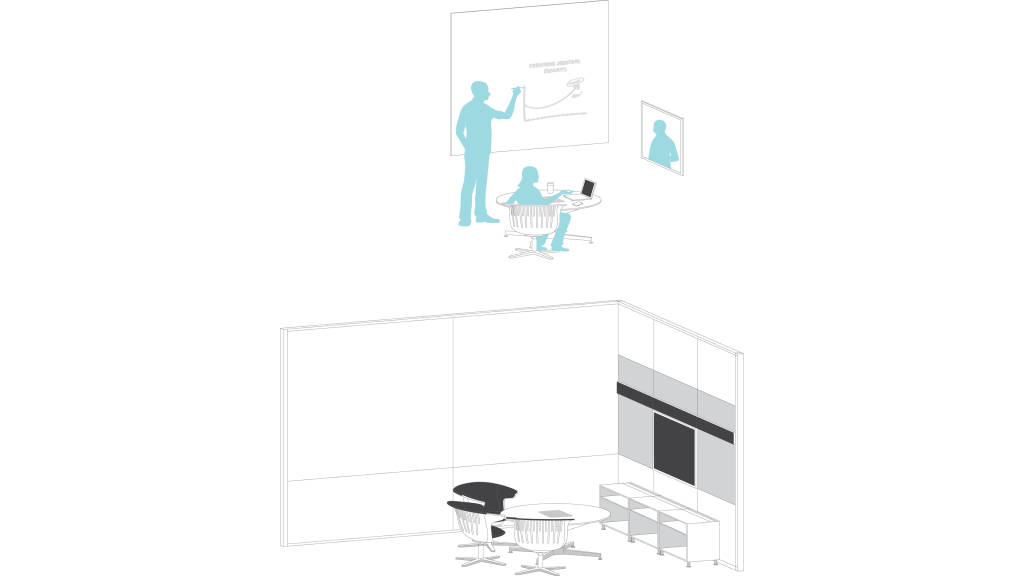
Walls are leveraged as planes for analog and digital collaboration. Chairs swivel so workers can switch eye contact quickly between each other and multiple information displays.
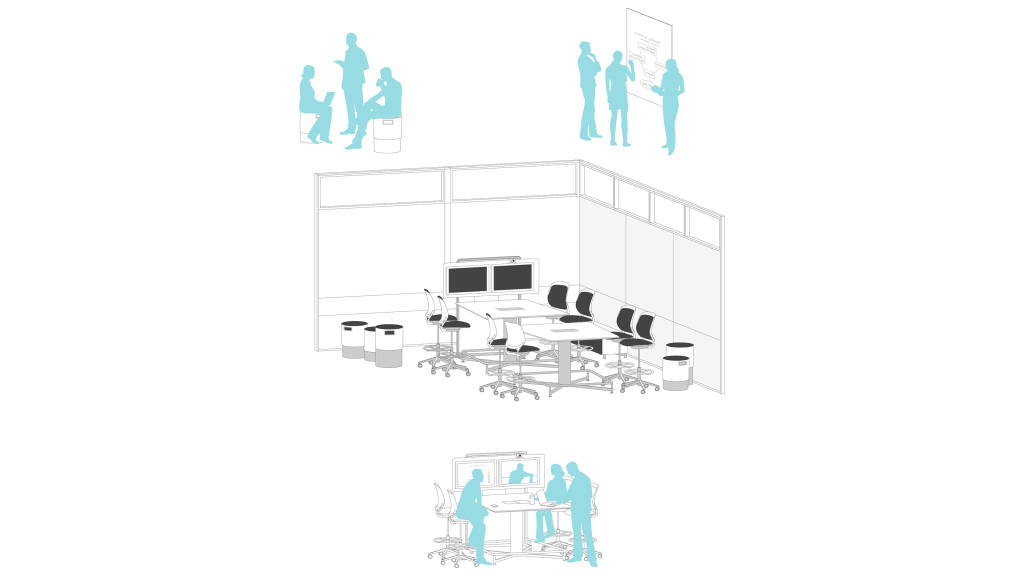
Well-situated high-definition telepresence and furniture amplifies the conditions for innovation by augmenting the quality and quantity of interactions for both physical and virtual participants.
Moveable seating provides informality and postural change. Using walls as vertical planes for displaying information increases mental capacity for dealing with complex issues.
Café
An informal and social setting to support connections, built trust and provide nourishment. Provides opportunities to connect socially and hosts mobile workers graciously to facilitate a sense of belonging, promote healthy professional relationships and bridge presence disparities.
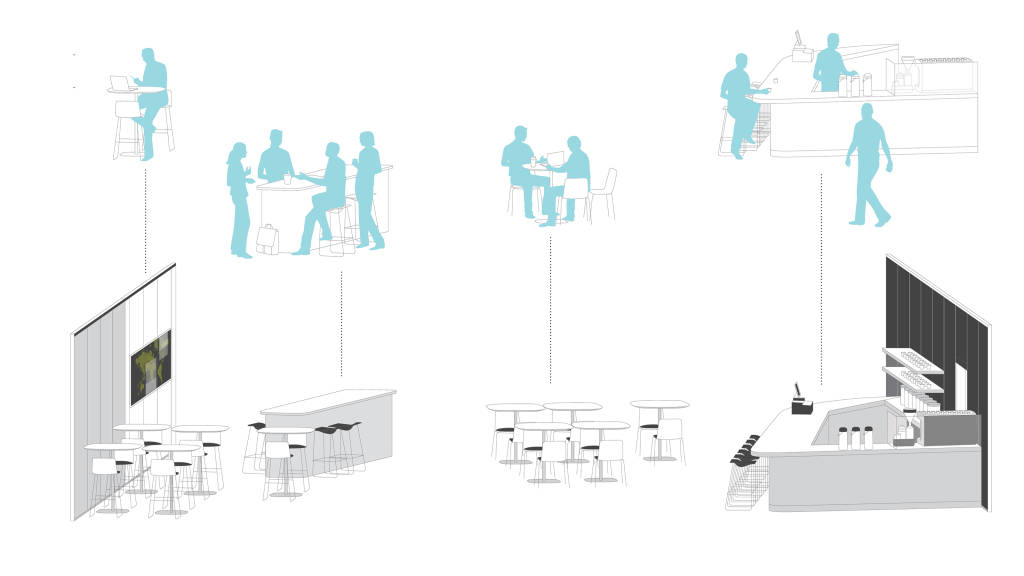
There is a variety of settings for socializing or meeting informally.
Nomadic Camp
An area for mobile users with a variety of settings that welcome and accommodate focus and collaboration. A palette of place and posture options provides solutions for mobile and geographically disparate users to feel a sense of belonging, community and connection to the brand and culture. Shared spaces welcome users and allow for personalization and self-selection, giving a sense of pride and temporary ownership.

Private Office
An owned space that provides the ability to express one’s self and display personal items and professional artifacts. Users are empowered to utilize the space in the best way to support their individual needs through amplification, making work visible on the walls or providing solitude for focus.
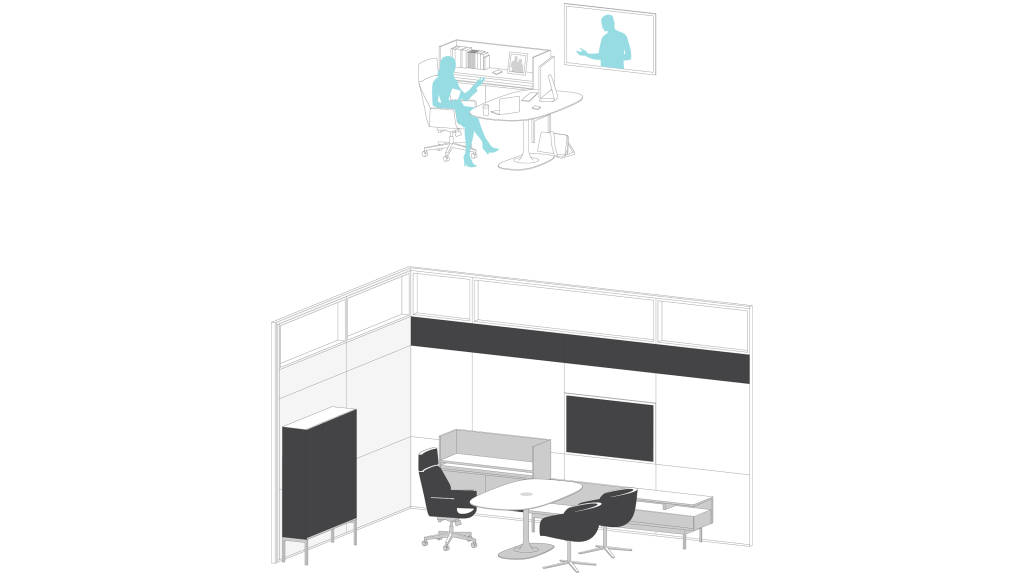
Acoustically sealed, the space supports quick switches from individual focused work to 1:1 connections and interactions.
Patio
A setting that offers inspiring views, access to nature and a palette of place, postures and presence options. Promote movement through the environment by encouraging users to select the right place for a given task. A variety of settings support user needs throughout the day, from focus to respite to collaboration.

Retreat
An informal place that enables people to be alone with others nearby or have informal interactions within the hum of surrounding activity. Provides great views to the outdoors and displays of organizational artifacts.
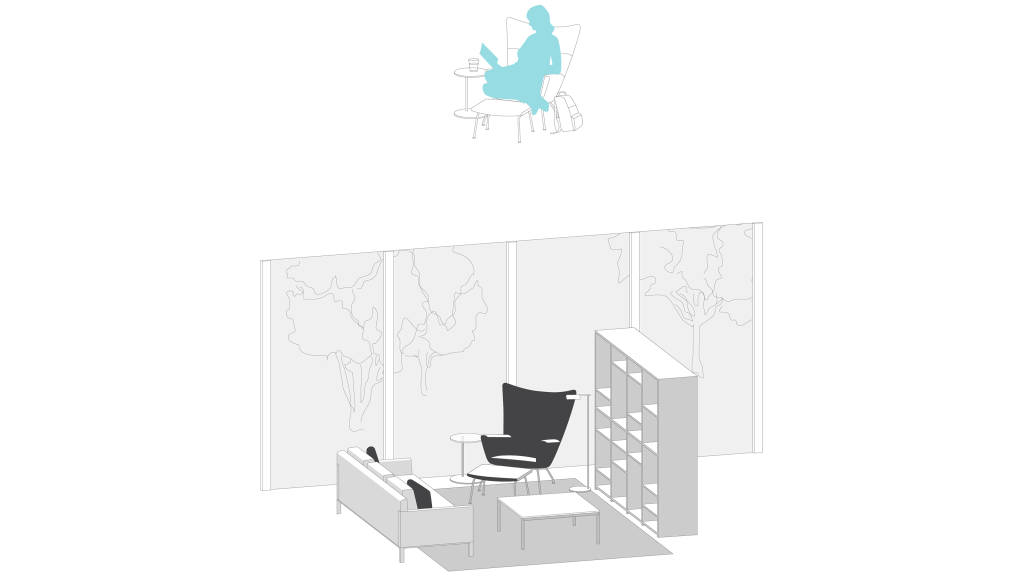
Those who aren’t comfortable in a high-sensory environment can come here to dial down the stimulation around them.
Innovation Suite
A space to fine-tune imagination, spark creativity and foster critical thinking. Inspire, engage and support evolving innovation processes and serve as a symbolic and tangible expression of a company’s commitment to a culture of innovation.
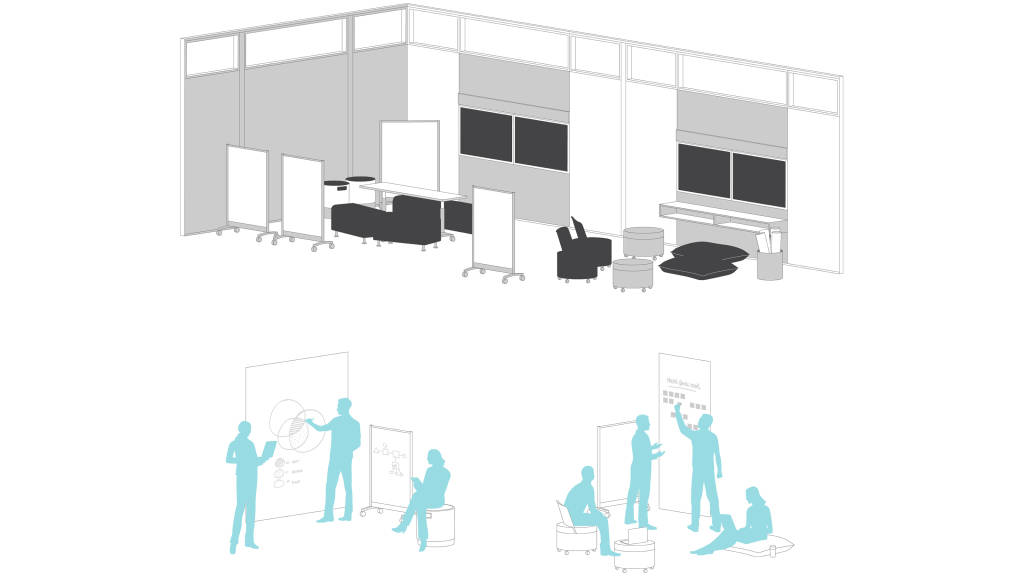
Enclaves
Small, private spaces that provide respite, focus and rejuvenation. Easily accessible with good visual signaling.
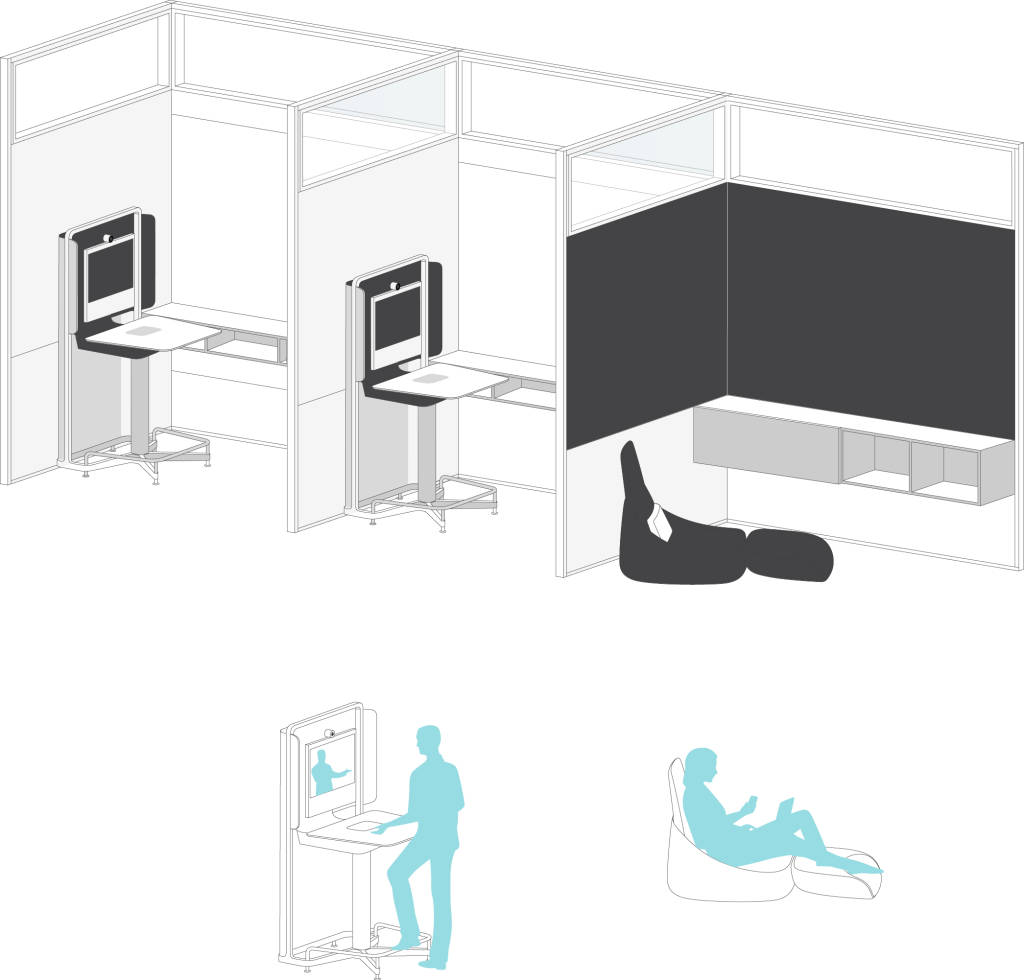
Resident Neighborhood
Owned individual space with supportive tools and personal control. Users can personalize their workstations and adjust for comfort. The overall zone supports a range of user needs, from focused work to collaboration to touch-down tasks, allowing the worker to choose where they feel most productive.
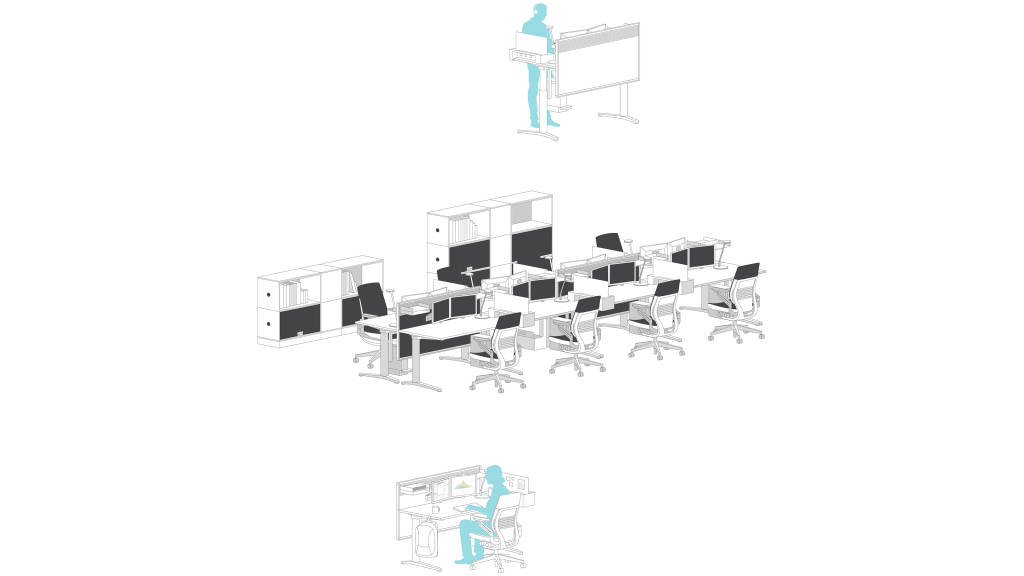
Personal storage cubbies and hooks at each workstation reduce clutter and act as a boundary between workers. Height-adjustable worksurfaces promote healthy movement and mental alertness, while also recognizing workers’ individual physical needs and preferences.


